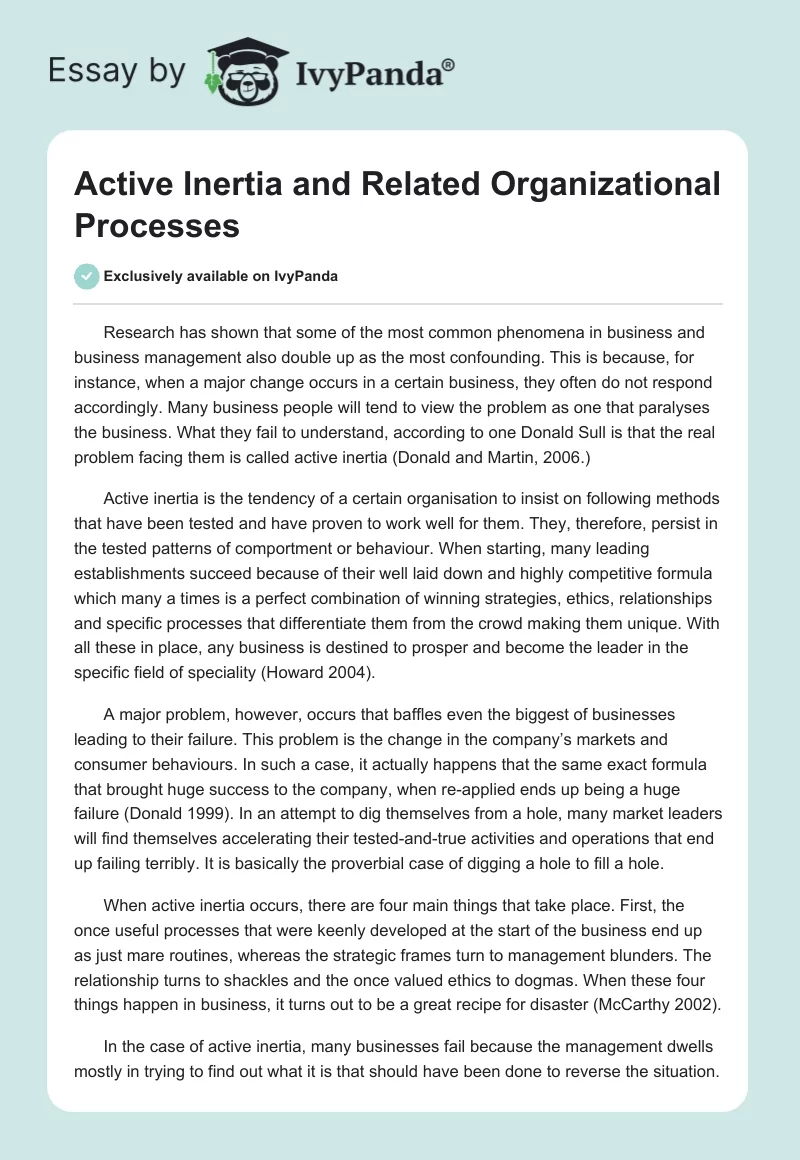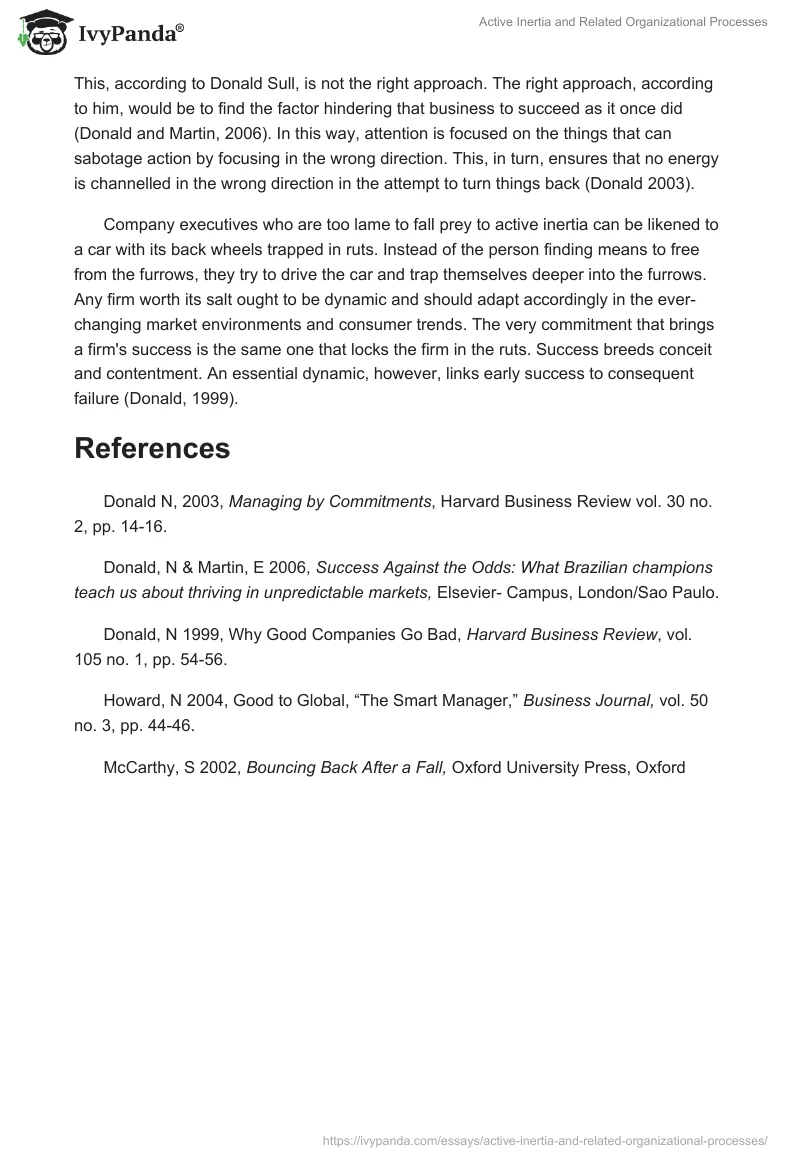Research has shown that some of the most common phenomena in business and business management also double up as the most confounding. This is because, for instance, when a major change occurs in a certain business, they often do not respond accordingly. Many business people will tend to view the problem as one that paralyses the business. What they fail to understand, according to one Donald Sull is that the real problem facing them is called active inertia (Donald and Martin, 2006.)
Active inertia is the tendency of a certain organisation to insist on following methods that have been tested and have proven to work well for them. They, therefore, persist in the tested patterns of comportment or behaviour. When starting, many leading establishments succeed because of their well laid down and highly competitive formula which many a times is a perfect combination of winning strategies, ethics, relationships and specific processes that differentiate them from the crowd making them unique. With all these in place, any business is destined to prosper and become the leader in the specific field of speciality (Howard 2004).
A major problem, however, occurs that baffles even the biggest of businesses leading to their failure. This problem is the change in the company’s markets and consumer behaviours. In such a case, it actually happens that the same exact formula that brought huge success to the company, when re-applied ends up being a huge failure (Donald 1999). In an attempt to dig themselves from a hole, many market leaders will find themselves accelerating their tested-and-true activities and operations that end up failing terribly. It is basically the proverbial case of digging a hole to fill a hole.
When active inertia occurs, there are four main things that take place. First, the once useful processes that were keenly developed at the start of the business end up as just mare routines, whereas the strategic frames turn to management blunders. The relationship turns to shackles and the once valued ethics to dogmas. When these four things happen in business, it turns out to be a great recipe for disaster (McCarthy 2002).
In the case of active inertia, many businesses fail because the management dwells mostly in trying to find out what it is that should have been done to reverse the situation. This, according to Donald Sull, is not the right approach. The right approach, according to him, would be to find the factor hindering that business to succeed as it once did (Donald and Martin, 2006). In this way, attention is focused on the things that can sabotage action by focusing in the wrong direction. This, in turn, ensures that no energy is channelled in the wrong direction in the attempt to turn things back (Donald 2003).
Company executives who are too lame to fall prey to active inertia can be likened to a car with its back wheels trapped in ruts. Instead of the person finding means to free from the furrows, they try to drive the car and trap themselves deeper into the furrows. Any firm worth its salt ought to be dynamic and should adapt accordingly in the ever-changing market environments and consumer trends. The very commitment that brings a firm’s success is the same one that locks the firm in the ruts. Success breeds conceit and contentment. An essential dynamic, however, links early success to consequent failure (Donald, 1999).
References
Donald N, 2003, Managing by Commitments, Harvard Business Review vol. 30 no. 2, pp. 14-16.
Donald, N & Martin, E 2006, Success Against the Odds: What Brazilian champions teach us about thriving in unpredictable markets, Elsevier- Campus, London/Sao Paulo.
Donald, N 1999, Why Good Companies Go Bad, Harvard Business Review, vol. 105 no. 1, pp. 54-56.
Howard, N 2004, Good to Global, “The Smart Manager,” Business Journal, vol. 50 no. 3, pp. 44-46.
McCarthy, S 2002, Bouncing Back After a Fall, Oxford University Press, Oxford


